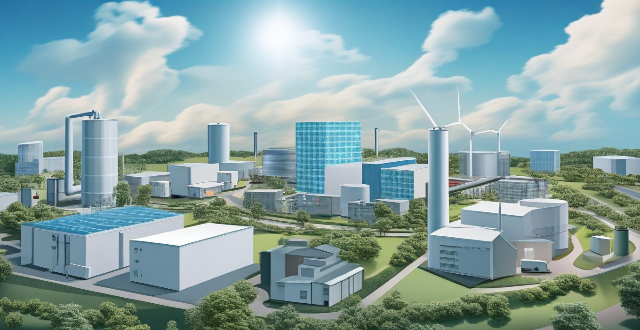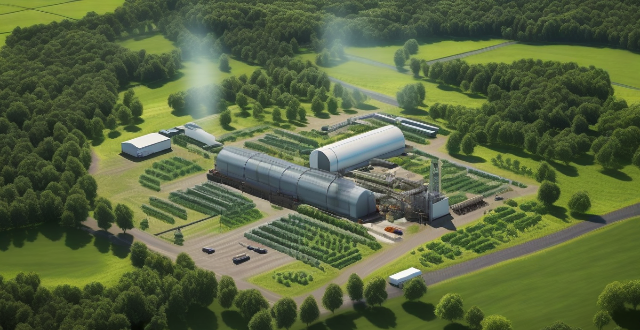Environmental Energy

Can you discuss the environmental impact of various energy storage methods ?
The text discusses the environmental impact of various energy storage methods, including batteries, pumped hydro storage, compressed air energy storage (CAES), and flywheels. It points out that while these methods allow for the efficient use of renewable energy sources and help to balance supply and demand, they also have varying levels of environmental impact. For example, battery production can result in water pollution and deforestation due to raw material extraction, while pumped hydro storage can affect local ecosystems and communities through land use and water usage. CAES may face challenges such as geological requirements and efficiency issues, and flywheels are considered an environmentally friendly option with a low environmental footprint. The text concludes that it is essential to consider both the efficiency and environmental implications of different energy storage solutions to ensure a sustainable future for our planet.

How can renewable energy policies be designed to maximize social and environmental benefits ?
Renewable energy policies are crucial for transitioning towards a sustainable future. To maximize social and environmental benefits, these policies must be carefully designed, considering various factors such as economic impacts, technological advancements, public acceptance, and environmental sustainability. Here's a detailed guide on how renewable energy policies can be structured to achieve the best outcomes: ## 1\. Setting Clear and Achievable Goals Clear objectives are fundamental for effective policymaking. These goals should be specific, measurable, achievable, relevant, and time-bound. ## 2\. Promoting Technological Innovation and Research Investments in research and development (R&D) are vital for advancing renewable technologies. Incentivize private sector R&D, provide public funding for research, and foster collaboration between academia and industry. ## 3\. Encouraging Public Participation and Awareness Engagement from the public is essential for the successful implementation of renewable energy policies. Educational campaigns, community involvement programs, and feedback mechanisms are key components. ## 4\. Implementing Economic Incentives Make renewable energy options more attractive through financial incentives such as feed-in tariffs, tax credits, and subsidies. ## 5\. Strengthening Legal and Regulatory Frameworks Establish clear regulations that support renewable energy adoption, including net metering laws, renewable portfolio standards, and building codes. ## 6\. Addressing Environmental Concerns Ensure that renewable energy projects minimize environmental impacts through environmental impact assessments, habitat protection measures, and sustainable land use practices. ## 7\. Supporting Infrastructure Development Invest in the necessary infrastructure to facilitate the growth of renewable energy, including transmission networks, storage solutions, and smart grids. ## 8\. Fostering International Cooperation Global collaboration is key to tackling climate change effectively. Facilitate the transfer of renewable energy technologies across borders, collaborate on international research efforts, and participate in treaties aimed at reducing carbon emissions and promoting renewable energy use globally.

How is renewable energy affecting the traditional energy market ?
Renewable energy sources are having a significant impact on the traditional energy market, affecting pricing, market share, job creation, and environmental concerns. The increased efficiency and reduced installation costs of renewable technologies have made them more competitive with traditional energy sources, leading to declining electricity prices overall. Additionally, the growing demand for renewable energy sources has led to an increase in their market share, particularly for solar and wind power. The transition to renewable energy is also creating new job opportunities across various sectors of the economy, while addressing environmental concerns associated with fossil fuel consumption.

What are the environmental impacts of driving an electric car ?
Driving an electric car can have a range of environmental impacts, both positive and negative. Some key factors to consider include reduced emissions, battery production and disposal, and energy sources. Electric cars produce zero tailpipe emissions, which can help improve air quality and reduce respiratory problems caused by vehicle emissions. Depending on how the electricity used to charge the car is generated, electric cars can also have a lower carbon footprint than traditional vehicles. However, the production of lithium-ion batteries for electric cars requires large amounts of energy and raw materials, which can have significant environmental impacts. At the end of their lifespan, batteries must be disposed of properly to prevent harmful chemicals from leaking into the environment. The environmental benefits of driving an electric car depend largely on where the electricity comes from. If it's generated by burning coal or other fossil fuels, the reduction in emissions may not be as significant as if it comes from renewable sources. As more people switch to electric cars, there will be increased demand for electricity, which could put a strain on power grids and lead to increased energy production. By addressing these challenges and continuing to develop cleaner energy solutions, we can maximize the environmental benefits of electric cars.

How do distributed energy systems impact the environment ?
Distributed energy systems, characterized by their clean and efficient nature, play a crucial role in modern energy systems. These systems primarily utilize renewable energy sources such as solar, wind, and biomass, and are typically located near energy consumers. This not only reduces transmission losses but also enhances the overall efficiency of energy utilization. The impact of distributed energy systems on the environment can be broadly categorized into the following key points: 1. **Reducing Greenhouse Gas Emissions** - **Decrease Fossil Fuel Dependence**: Distributed energy systems often use renewable energy sources, reducing the need for fossil fuels and thereby decreasing greenhouse gas emissions associated with traditional power generation. - **Promote Energy Diversification**: By combining various renewable sources, these systems help diversify energy production, further mitigating the environmental impact of energy reliance on any single source. 2. **Enhancing Energy Utilization Efficiency** - **Decentralized Production**: Producing energy closer to where it is consumed reduces transmission losses that occur in centralized power systems. - **Combined Heat Power**: Some distributed systems employ combined heat and power (CHP) technology, which can achieve higher energy efficiency rates, up to 80%-90%, compared to traditional methods. 3. **Mitigating Environmental Pollution** - **Reduction in Exhaust Emissions**: Renewable distributed energy sources like solar and wind inherently produce no emissions, significantly reducing air pollution compared to fossil fuel combustion. - **Minimizing Water Pollution**: Unlike some large-scale hydroelectric projects, distributed renewable sources have a minimal impact on water ecosystems and do not introduce pollutants into water bodies. 4. **Promoting Sustainable Development** - **Sustainable Resource Cycles**: Distributed systems often incorporate local energy cycles, promoting sustainable resource use and management at a community level. - **Eco-friendly Infrastructure**: The infrastructure required for distributed energy systems, such as solar panels and wind turbines, has a relatively lower environmental footprint compared to traditional power plants. 5. **Improving Ecological Biodiversity** - **Land Use Impact**: Distributed energy projects generally require less land compared to large-scale power plants, thus having a reduced impact on habitats and biodiversity. - **Habitat Preservation**: The decentralized nature of these systems allows for easier integration into existing environments without significantly disrupting ecological balance. 6. **Increasing Systemic Resilience** - **Disaster Response**: Decentralized energy systems can continue to operate even when the main grid fails, enhancing community resilience during natural disasters or other crises. - **Grid Stability**: Distributed energy resources can help stabilize the electrical grid by providing localized load balancing and peak shaving functions. 7. **Supporting Policy and Regulations** - **Policy Driving Forces**: Many governments encourage the development of distributed energy through favorable policies, aiming to reduce carbon emissions and promote sustainable development. - **Regulatory Frameworks**: Comprehensive regulatory frameworks ensure that the development of distributed energy aligns with environmental protection and sustainability goals. Additionally, while distributed energy systems offer numerous environmental benefits, careful planning and implementation are necessary to maximize their positive impacts. For instance, the extraction and processing of materials for solar panels and wind turbines can have environmental costs, necessitating strict oversight and environmentally friendly practices. Moreover, integrating distributed energy effectively into existing energy frameworks requires advanced grid management technologies and innovative market mechanisms.

How can existing buildings be retrofitted to improve their environmental performance ?
Improving the environmental performance of existing buildings involves retrofitting them to reduce energy consumption, carbon emissions, and overall environmental impact. Strategies include upgrading insulation and air sealing, replacing old windows and doors, upgrading HVAC systems, switching to LED lighting, implementing water efficiency measures, using renewable energy sources, and improving waste management through composting and recycling programs. These measures contribute to a more sustainable future by conserving energy, reducing waste, and protecting planetary resources.

What advances have been made in hydropower technology to minimize environmental impact ?
Hydropower technology has seen significant advances to minimize its environmental impact, including run-of-river designs, low-head turbines, fish-friendly turbines, pulse generating technology, eco-dam designs, integrated renewable energy systems, digital monitoring and control systems, retrofitting older dams, environmental impact assessments, and community involvement and transparency. These developments aim to make hydropower more sustainable by balancing clean energy production with the preservation of ecosystems.

What are the benefits of using a distributed energy system ?
Distributed energy systems (DES) have become increasingly popular due to their numerous benefits. These systems can include solar panels, wind turbines, micro-hydro plants, and other renewable energy sources. The key benefits of using a distributed energy system are increased energy efficiency, lower energy costs, improved reliability and resilience, environmental sustainability, encouragement of local economy and job creation, promotion of energy independence and security, and flexibility and scalability. Adopting a distributed energy system brings numerous benefits ranging from increased efficiency and cost savings to improved reliability, environmental sustainability, economic development, and energy security.

What are the main challenges in developing advanced energy storage technologies ?
The main challenges in developing advanced energy storage technologies include high cost, limited resource availability, performance metrics, safety concerns, environmental impact, regulatory compliance, and technological innovation. These challenges require significant investment in research and development, addressing supply chain issues, improving energy and power density, ensuring thermal and chemical stability, managing the environmental impact of battery production and disposal, adhering to international and local regulations, and continuously innovating to improve existing technologies and explore alternative solutions.

Is green technology a sustainable solution for environmental problems ?
Green technology offers a promising pathway towards sustainability, but it's not without its challenges. While it has the potential to significantly mitigate environmental problems, it requires substantial investment, infrastructure development, and policy support to reach its full potential.

What is the role of individuals in addressing climate change and environmental degradation ?
This article discusses the role of individuals in combating climate change and environmental degradation. It highlights the cumulative impact of individual actions, their potential to inspire others, and the political pressure they can exert. The article provides practical steps individuals can take, such as reducing their carbon footprint, supporting renewable energy, waste reduction and recycling, advocating for environmental policies, and spreading awareness. It emphasizes that collective efforts can make a significant difference in creating a more sustainable future for our planet.

How can we balance economic growth with environmental sustainability ?
Balancing economic growth with environmental sustainability requires a multifaceted approach that includes promoting green infrastructure and renewable energy, encouraging sustainable business practices, fostering innovation and technology development, educating and engaging stakeholders, and implementing policies and regulations. By taking these steps, we can create a more sustainable future where economic prosperity coexists with environmental well-being. Achieving this balance will require ongoing effort from all sectors of society, including governments, businesses, communities, and individuals alike.

How do economic systems contribute to environmental problems and climate change ?
Economic systems, especially capitalism and industrialization, significantly impact the environment by promoting overproduction, waste, and reliance on fossil fuels. Issues such as built-in obsolescence, global trade emissions, and exploitation of natural resources exacerbate environmental problems. Additionally, population growth and urbanization increase consumption, while market failures and regulatory gaps often overlook environmental costs. Addressing these challenges requires a shift in economic priorities towards sustainability.

How has environmental legislation evolved over time ?
Environmental legislation has evolved over time, reflecting growing awareness of environmental issues. Early stages focused on preserving natural resources and conserving wildlife habitats, while post-World War II saw a shift towards pollution control through air and water quality regulations. The late 20th century introduced comprehensive environmental protection laws addressing multiple aspects of environmental degradation. Today's legislation prioritizes sustainable development and climate change mitigation, with a focus on public participation and transparency in decision-making processes.

How do environmental subsidy policies influence consumer behavior ?
Environmental subsidy policies aim to promote sustainable practices and reduce environmental harm by offering financial incentives. These policies can encourage green consumption, lower the cost of eco-friendly products, and raise awareness about environmental issues. However, they also face challenges such as insufficient incentives, unintended consequences, and limited scope and impact. Therefore, careful design and evaluation are crucial for ensuring their effectiveness in promoting sustainable development.

What factors should be considered before investing in clean energy ?
Investing in clean energy requires careful consideration of various factors, such as cost and budget, technology and innovation, market trends and demand, government policies and incentives, environmental impact and sustainability goals, and risk management and mitigation strategies. By evaluating these key points before making an investment, one can make an informed decision that aligns with financial goals, environmental values, and strategic objectives.

How can environmental ethics be integrated into business practices ?
Integrating environmental ethics into business practices is essential for sustainable development and responsible corporate citizenship. This can be achieved by adopting a sustainability mindset, assessing environmental impact, implementing eco-friendly practices, promoting green innovation, engaging in corporate social responsibility (CSR), complying with regulations and standards, and fostering a culture of continuous improvement. By doing so, companies can mitigate their environmental impact, enhance their reputation, attract socially conscious consumers, and potentially increase profitability through resource efficiency and innovation.

How does climate change legislation address the concerns of environmental justice and equity ?
Climate change legislation should address environmental justice and equity by prioritizing vulnerable communities, promoting participatory decision-making, ensuring access to clean energy and sustainable practices, and addressing environmental health disparities. This will create more equitable and effective climate policies for all communities.

How can education promote environmental ethics ?
Education is crucial for fostering environmental ethics among students by integrating interdisciplinary approaches, real-world examples, and skill development. Experiential learning through field trips, hands-on projects, and community engagement helps instill a deeper connection with nature. Teaching sustainable practices like reducing waste and conserving energy encourages responsible resource management. Encouraging critical thinking through debates and research assignments enhances understanding of complex environmental issues. Cultivating empathy and responsibility involves promoting nature connectivity and global perspectives. Assessment and reinforcement strategies such as project-based assessments and recognition programs help evaluate and motivate students' commitment to environmental stewardship.

How can climate and environmental policies be designed to promote sustainable economic growth ?
This text discusses the integration of environmental considerations into economic planning, promoting renewable energy sources, encouraging energy efficiency, supporting green infrastructure, promoting circular economy practices, strengthening environmental regulations, and fostering international cooperation to promote sustainable economic growth.

How does clean energy investment compare to traditional energy investment ?
Investing in energy sources is crucial for the development and growth of any economy. However, the choice between clean energy investment and traditional energy investment has become a significant topic of discussion in recent years. This comparison will explore the differences between these two types of investments, focusing on their costs, benefits, and potential impacts on the environment and society.

How do environmental subsidy policies impact economic growth ?
The text discusses the impact of environmental subsidy policies on economic growth, highlighting both positive and negative effects. Positive impacts include stimulating innovation and technology development, enhancing energy efficiency, creating job opportunities, and improving public health. Negative impacts encompass distorting market incentives, increasing government expenditures, potential for carbon lock-in, and global trade implications. It concludes that while environmental subsidies have the potential to foster economic growth, they must be carefully designed to avoid adverse effects and contribute positively to sustainable economic development.

What are the most effective ways to promote environmental awareness ?
Promoting environmental awareness is crucial for the sustainable development of our planet. Effective ways to raise awareness about environmental issues include education and training through school curriculums, community workshops, and online courses; media and public outreach via social media campaigns, public service announcements, and documentaries; corporate responsibility initiatives such as green marketing, CSR programs, and partnerships with NGOs; and government policies and initiatives including environmental legislation, eco-friendly infrastructure, and international cooperation. By implementing these strategies, we can create a more informed and engaged global community committed to protecting our environment for future generations.

What is energy transition and why is it important ?
Text: Energy transition is the shift from traditional to renewable energy sources, important for reducing greenhouse gas emissions, promoting sustainable development, and improving energy security. Benefits include economic growth, environmental protection, and social progress.

What are the environmental impacts of electric cars ?
Electric cars, also known as EVs (Electric Vehicles), have become increasingly popular in recent years due to their potential to reduce greenhouse gas emissions and improve air quality. However, like any other technology, electric cars also have some environmental impacts that need to be considered. In this article, we will discuss the various environmental impacts of electric cars. One of the most significant environmental benefits of electric cars is their ability to reduce greenhouse gas emissions. Compared to traditional gasoline-powered vehicles, electric cars produce zero tailpipe emissions. This means that they do not release harmful pollutants such as carbon dioxide, nitrogen oxides, and particulate matter into the atmosphere. As a result, electric cars can help reduce air pollution and improve public health. The environmental impact of electric cars also depends on the source of energy used for charging them. If the electricity used to charge an electric car comes from renewable sources such as wind or solar power, then the overall environmental impact is positive. However, if the electricity comes from coal-fired power plants or other non-renewable sources, then the environmental benefits are reduced. It is essential to ensure that the electricity used for charging electric cars comes from clean and sustainable sources. The production of lithium-ion batteries used in electric cars has some environmental impacts. The mining and processing of raw materials required for battery production can lead to water pollution, soil contamination, and habitat destruction. Additionally, the disposal of spent batteries can pose challenges as they contain toxic chemicals that can harm the environment if not disposed of properly. Recycling programs and research into alternative battery technologies can help mitigate these impacts. The manufacturing process of electric cars also has some environmental impacts. The production of electric car components requires energy and resources, which can lead to greenhouse gas emissions and other forms of pollution. However, compared to traditional gasoline-powered vehicles, electric cars generally have a lower environmental impact during the manufacturing process due to their simpler design and fewer moving parts. To fully understand the environmental impacts of electric cars, it is essential to consider their entire lifecycle, including raw material extraction, manufacturing, use, and disposal. A comprehensive lifecycle analysis can help identify areas where improvements can be made to reduce the overall environmental impact of electric cars. This may include using more sustainable materials, improving energy efficiency during manufacturing, and developing better recycling programs for spent batteries. In conclusion, while electric cars offer significant environmental benefits over traditional gasoline-powered vehicles, they also have some environmental impacts that need to be considered. By addressing these issues through sustainable practices and continued research, we can maximize the positive environmental impacts of electric cars and work towards a cleaner, greener future.

Can using energy-efficient appliances help cut down electricity consumption ?
Energy-efficient appliances can help cut down electricity consumption by using less power than traditional counterparts, leading to cost savings and environmental benefits. Examples include LED light bulbs, smart thermostats, and energy star certified refrigerators.

What role do governments play in environmental conservation efforts ?
Governments play a crucial role in environmental conservation efforts by creating and implementing policies, regulations, and programs that promote sustainable development and protect natural resources. They can contribute to environmental conservation through legislation and regulation, public awareness campaigns, financial incentives and subsidies, international cooperation, and conservation programs. By taking these actions, governments can help ensure a sustainable future for our planet.

What is the relationship between energy-efficient appliances and overall energy savings ?
The text discusses the connection between energy-efficient appliances and overall energy savings, defining such appliances as those engineered to meet specific efficiency standards. These devices reduce direct energy consumption through lower power requirements and advanced technology, leading to long-term cost benefits and environmental advantages like reduced greenhouse gas emissions. To maximize savings, consumers should research and maintain these appliances properly and replace older models. The relationship underscores the importance of energy-efficient appliances in achieving energy savings for a more sustainable future.

What are some examples of successful environmental subsidy policies ?
Successful environmental subsidy policies include renewable energy incentives, energy efficiency grants, green transport initiatives, agricultural sustainability programs, waste management and recycling incentives, carbon pricing mechanisms, water conservation policies, and forestry and biodiversity protection measures. These policies aim to promote sustainable practices and reduce pollution by providing financial incentives for environmentally friendly activities. Examples of such policies include feed-in tariffs, renewable portfolio standards, home insulation programs, appliance rebate schemes, public transport subsidies, electric vehicle incentives, conservation reserve programs, organic farming grants, pay-as-you-throw programs, bottle deposit legislation, cap-and-trade systems, carbon taxes, water efficiency standards, rainwater harvesting incentives, payments for ecosystem services, and conservation easements. By aligning private interests with public goods through economic incentives, these policies achieve collective benefits for our planet and future generations.